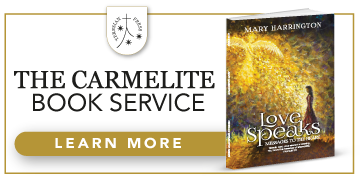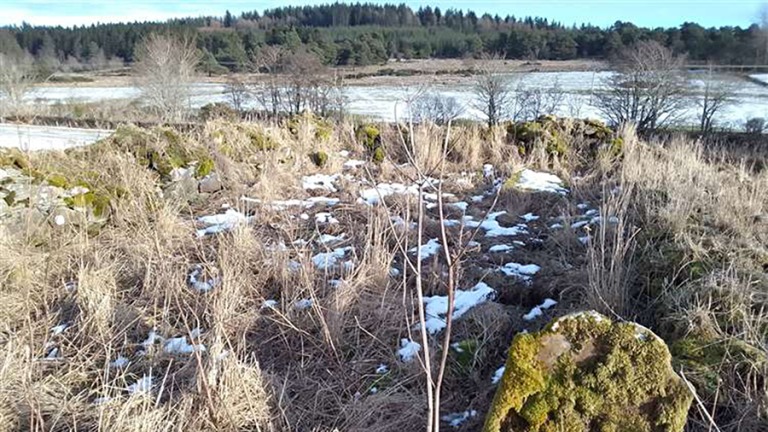Sorry, no records were found. Please adjust your search criteria and try again.
Sorry, unable to load the Maps API.
AN unassuming patch of fenced grass in an Aberdeenshire field offers a link to local priests’ service and sacrifice in the face of religious persecution.
Despite the site being “all but forgotten” the burial ground, in the ruins of a burned-down church first documented nearly 800 years ago, could become a tribute to their incredible stories, says Grampian Online reporter Tina Harris.
“It was quite by accident that I discovered a tiny, overgrown and forgotten holy space not three miles from Huntly, where five priests are interred with no recognisable memorial,” says Tina.
The site of St Peter, Drumdelgie, is without public acknowledgement or signage, and has evaded centuries of civil improvement.
Alongside a burial site, the ruin lies at the foot of a field close to a river – almost monastic in its remoteness. An enclosing wall surrounds the few graves, mainly local landowners and their families, and keeps farm animals out.
Dating from medieval times, the little church fit with the style and formation of the Peterkirks, initiated by king of the Picts Nechtan with St Boniface – following the rise of Christianity and the influence of Rome. Centuries later this little church – named after St Peter, Petros, the rock upon which Christ built his church – was burned down and referred to for many years as the Brunt (burnt) Kirk after the British monarchy divorced itself from Rome.
However, according to legend, the fire was caused by a bird carrying a burning twig which fell onto the thatched roof of the kirk building.
Despite the Drumdelgie kirk’s rich history, weeds now grow shoulder-high as trees and rabbits run free. And although there are a few significant bumps in the burial ground, it is unlikely others can be identified – leaving the five priests who are buried there with no known memorial.
Although early Scottish grave markers are rare, it is noted that one memorial was decimated by anti-Catholic forces.
“It would be a project of respect to bring this tiny plot into focus. Long after the people have left, and the land reclaimed for another purpose, this little chapel and its precious kirkyard has remained.
“Its history must serve to remind us of the ability of the human spirit to lift itself, with the grace of God, above adversity, and to touch others to join and create a small but very special place”, said Tina.
The priests buried at St Peter’s Church, Drumdelgie
Fr Gilbert Blackhall was a Scottish missionary priest in France, scholar of the Scots College in Rome, and head of the Scots College in Paris. He came to the rural area of Strathbogie (Huntly) in connection with local nobility in 1630, and was known to have secretly celebrated mass at Drumdelgie in 1640. In 1653 he was (briefly) head of the Scots College in Paris. He was excommunicated in 1664. He wrote an extensive autobiography of his work in Paris, containing his association with Lady Isabella Hay, the Countess of Aboyne, and Henrietta Gordon. The work was published by the Spalding Club in 1844. There is no exact date of death, although we believe it to be 1671.
Fr Patrick Primrose was a Scottish Dominican priest and Vicar-General (the only person ever to hold this joint office). He died of cold in February 1671, shortly after release from Banff jail (where he had been serving a sentence for saying mass) and was interred at Drumdelgie. A memorial was built in the burial ground at Drumdelgie but was demolished in 1672. Fr Patrick was also Royal Chaplain to Queen Catherine of Braganza.
Fr John Gordon, priest and active Jacobite, died age 48, in 1761. Two of his relatives are buried beside him.
Fr John Gordon died in 1961 and was the last priest buried in the grounds of St Peter’s. He is though to be a descendant of the Fr John Gordon buried on the same site 200 years prior.
Fr George Adamson was laid to rest at Drumdelgie in 1707, and his grave is marked with an inscribed stone “not far from the south east corner of the church”.
St Peter’s Church
Banffshire remained one of the areas of Scotland to retain a significant catholic population after the reformation. The first mention of this Peterkirk appears in 1230, as an agreement between the Bishop of Moray, Andreas de Moravia (also rector of the Peterkirk at Duffus), and David of Strathbogie, according to an old reference book written by Andrew Jervise (1820-1878).
The book lists epitaphs and inscriptions from burial grounds in the north east. A description of the building gives precise details:
“The kirk was about 24 feet in width, and 55 feet in length over walls; and the walls are about 3 feet thick. It stood east and west; with a window in the west end, and the entrance on the south. Though the kirk is now quite ruinous, the foundations are entire, and the greatest height of the remaining portion of the wall is about nine feet. The area of the building is used for interments, and some tombstones are within it.”
Do you want to respond to this article? If so, click here to submit your thoughts to Grampian Online and they may be published in print.
With thanks to:





























